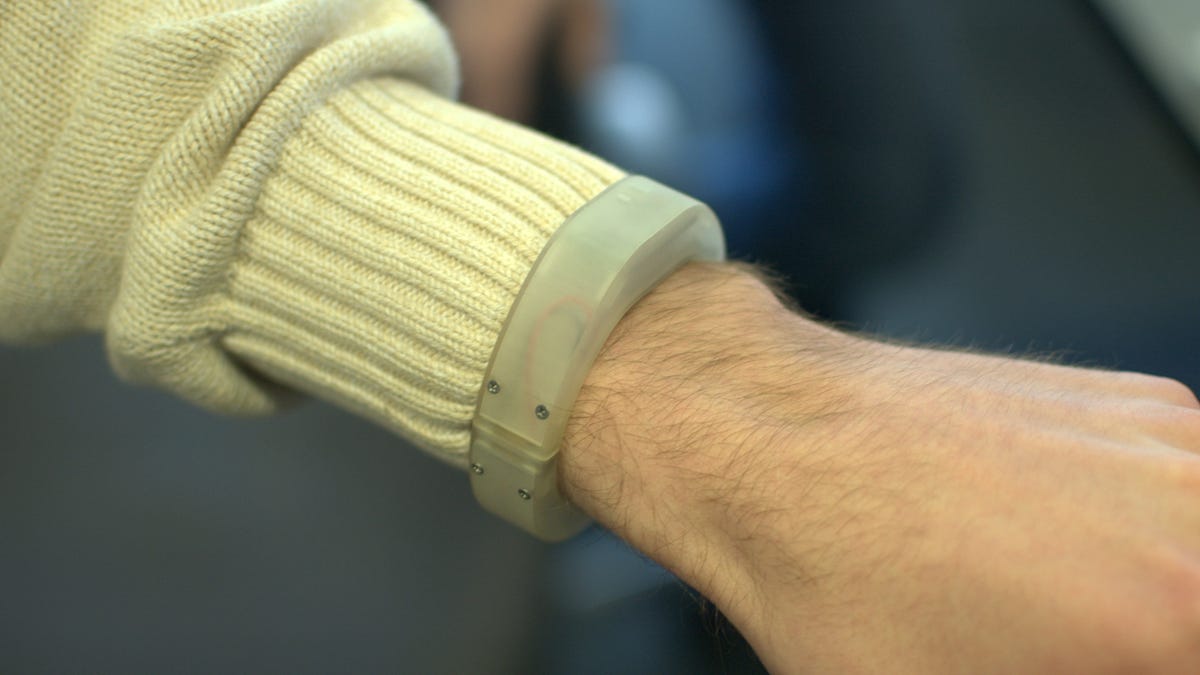WristQue wearable sensor connects you, digital world
An MIT Media Lab prototype of a wristband sensor, first being tested to automatically control building temperature settings, offers an unobtrusive interface to smart buildings.

CAMBRIDGE, Mass.--An MIT Media Lab project called WristQue offers a way to interact with smart buildings and computers in an unobtrusive way.
Researchers at the Media Lab recently completed the first prototype of WristQue wearable sensor and described some of its potential uses yesterday here.
The first application of the wristband device is to automatically set heating and lighting controls to the wearer's preferences. It could also be used as an interface with public displays in buildings, showing the user personal information, such as a daily calendar, according to PhD student Brian Mayton who is working on the project.
The WristQue is a simple computer equipped with sensors for temperature and humidity, a Zigbee radio, and a few simple buttons. By connecting to base stations, the device knows where the user is and, by communicating with a smart building's control system, can adjust heating and cooling settings. A person can input preferences with a button on the wristband or a personal computer, Mayton said.
"The idea with the wrist band is to bring some of that control to you and also put some sensing in there so the (building) control system can react to your preferences without you having to provide explicit input," Mayton said. Building control systems are generally too complicated for residents to use or personalize, he said.
The research group intends to add more sensors, such as an accelerometer and gyroscope, which would allow a person to use gestures to control building temperature settings and connected lights, too.
More broadly, WristQue is a way for interacting with physical objects which are digital and connected, said Joseph Paradiso, the director of the Responsive Environments group at the MIT Media Lab. "WristQue is a universal key to ubiquitous computing," he said.
Experiments have tested wearable computers and sensors for years, but the closest thing to go mainstream is smart phones, which have become like an appendage to many people.
Earlier this month, Google showed off prototypes of its Project Glass, voice-controlled glasses that connect people to Internet services. The much-discussed demonstration video of Project Glass illustrated how technology has advanced to the point where wearable computers and sensors are feasible and could be used for consumer applications.
The WristQue work is focusing first on how people can best interact with "smart infrastructure," such as building with wireless controls. The rapid adoption of smart phones means that millions of people effectively already have computers and sensors, but Mayton said a wristband offers some advantages.
"Smart phones are in people's pockets but sensing what's in people's pockets isn't very interesting so the wrist band brings the sensors out of the pockets where they can pick up interesting things," he said.
A wearable sensor in the form of a badge works better in corporate environments where people already wear badges but less so in the Media Lab. "We hypothesize that's people are more likely to wear a wristband. People wear watches," he said. The device is also 3D printable so users could customize colors.

